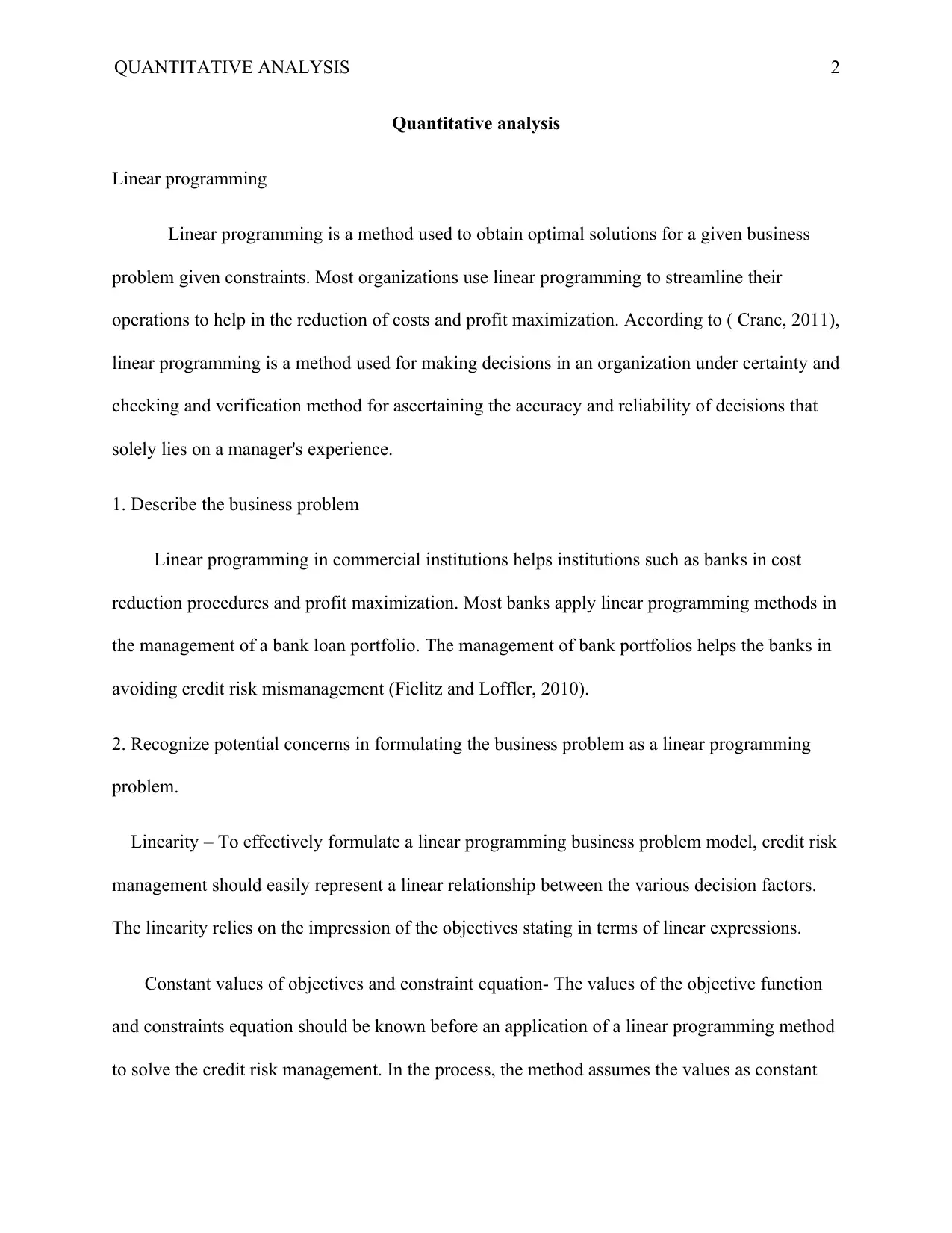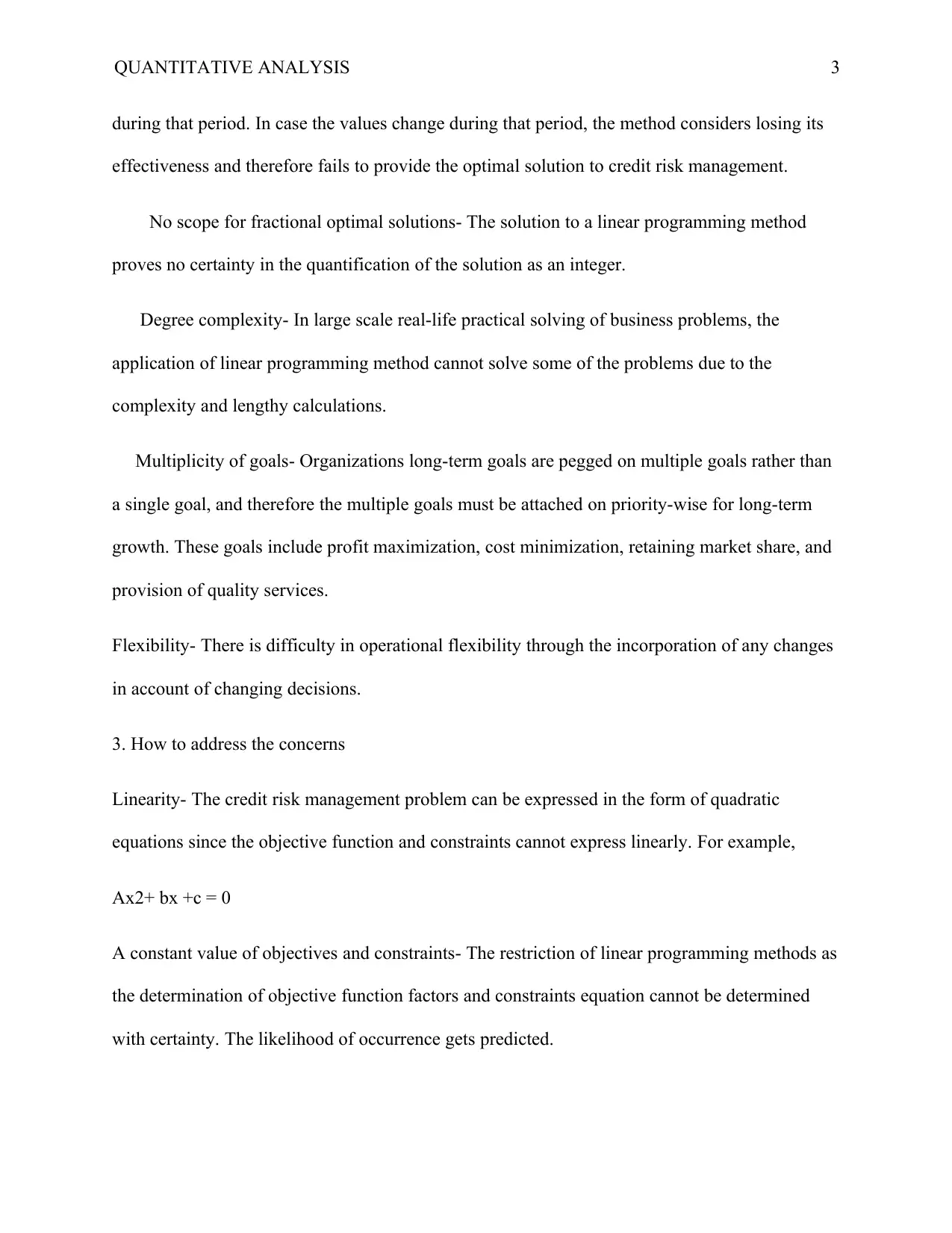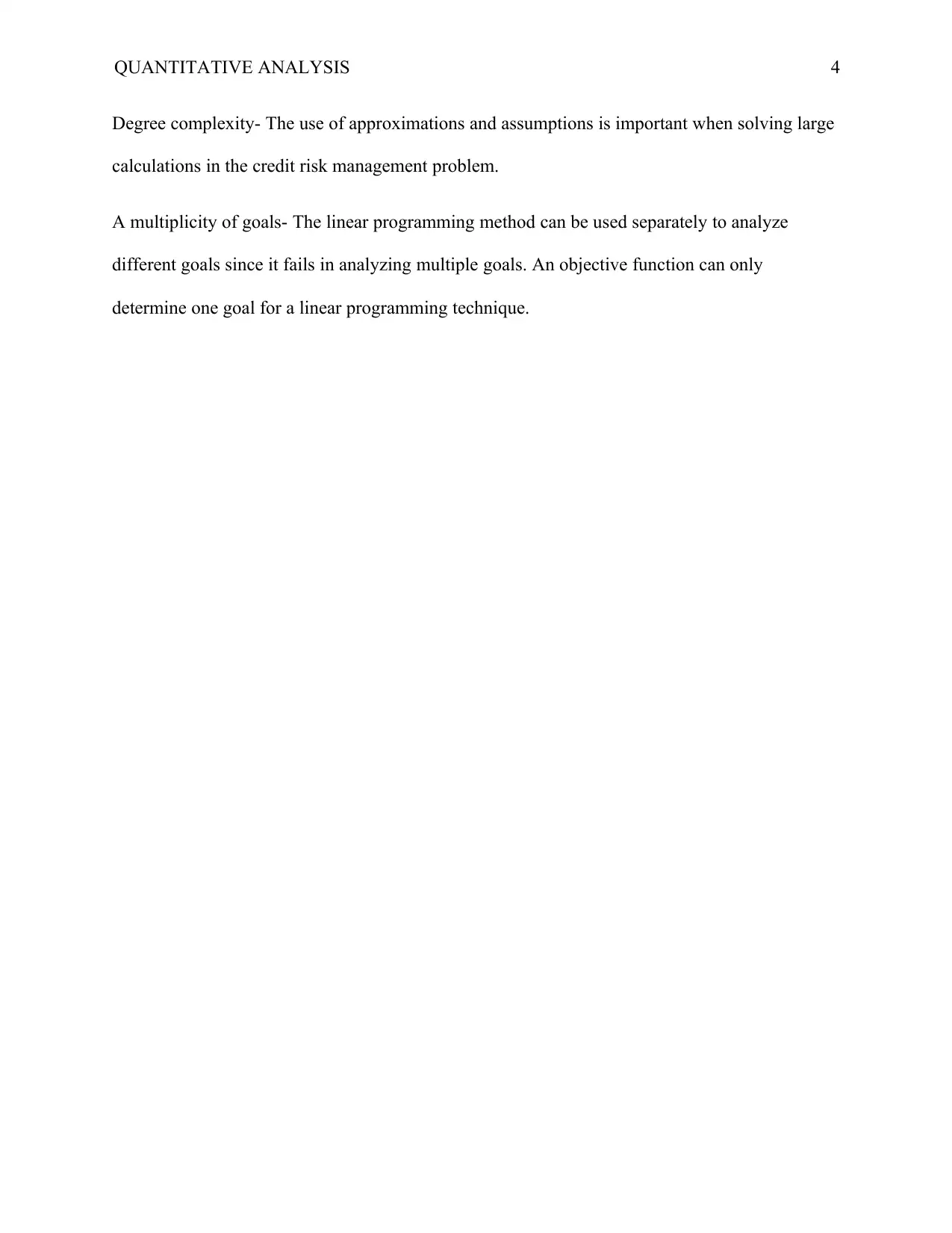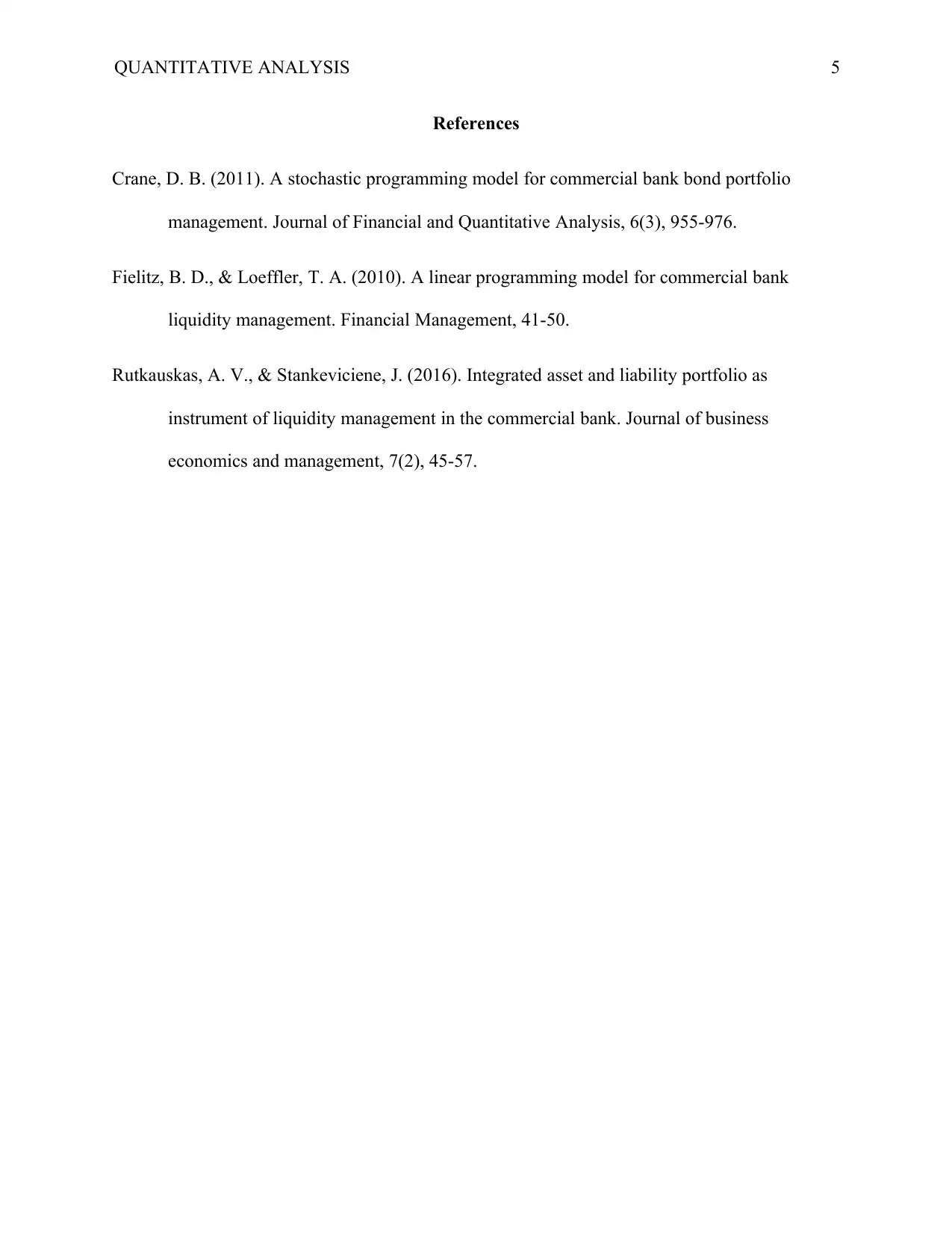Quantitative Analysis Report: Linear Programming in Finance
VerifiedAdded on 2022/09/21
|5
|672
|37
Report
AI Summary
This report delves into quantitative analysis, specifically focusing on the application of linear programming in the financial sector. It examines how institutions, such as banks, utilize linear programming to optimize operations, reduce costs, and maximize profits, particularly in managing bank loan portfolios. The report highlights the importance of linear programming in mitigating credit risk mismanagement. It outlines a business problem, recognizing potential concerns in formulating it as a linear programming problem, including linearity, constant values, scope for fractional solutions, degree complexity, and multiplicity of goals. The report then suggests ways to address these concerns, offering solutions such as using quadratic equations when linearity is not feasible and employing approximations for complex calculations. The report concludes with a reference to the application of linear programming as a tool to analyze different goals separately, given its limitation in analyzing multiple goals simultaneously. The analysis is supported by citations from relevant academic sources.
1 out of 5












![[object Object]](/_next/static/media/star-bottom.7253800d.svg)